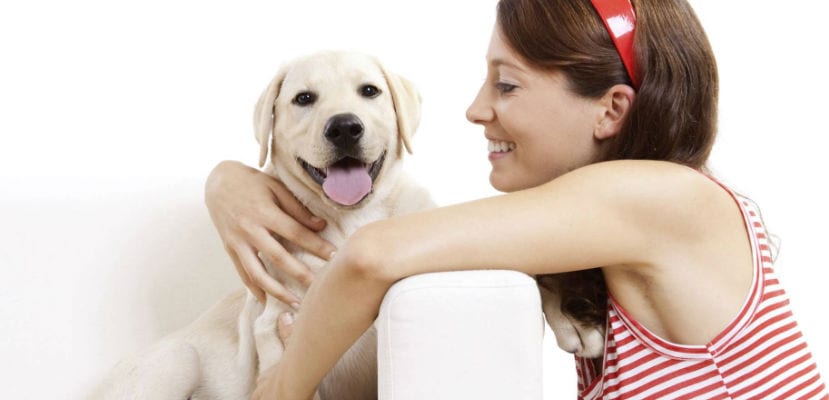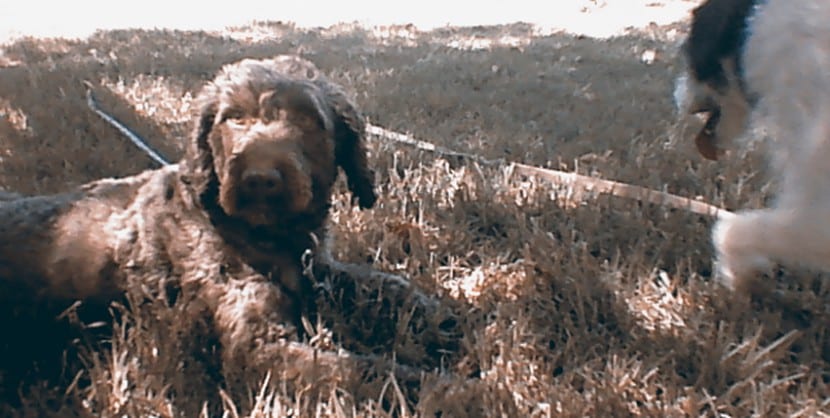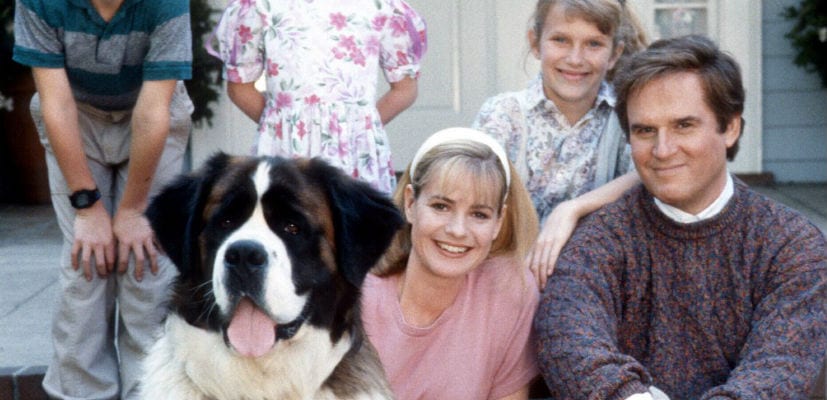
Today, the term of Emotional Intelligence or Social Intelligence. Within humans, emotional intelligence has proven to be just as important (or more) than cognitive intelligence for our lives, and it is a determining factor in whether we feel happy or not. This made me ask myself the following question, Does my dog love me like I love him?, and the answer was not easy ...
In this article, I review some studies that show that our dogs have feelings, as well as some other personal reflection. Without further ado, I leave you with the article, Does my dog love me like I love him? Emotional intelligence between dogs and humans. I hope you enjoy it.
Emotions and feelings

On a personal level, telling a person who has a pet such as a dog or a cat that their dog has no feelings is very difficult. Both to communicate and to demonstrate. And this has a reason: we enter the field of emotions and feelings. And you can't deny a feeling or an emotion. We all have them. However, Do we know what a feeling or an emotion is?
Differences between emotions and feelings
Describing and differentiating what an emotion is from a feeling, in the XXI century, should be easier and more agreed by the international scientific community, however, being a relatively new topic (that of Emotional Intelligence and his study I mean), the definitions of emotion and feeling vary depending on who is talking about it, however, I will try to explain it as easily as possible.
What is an emotion?
The etymological root of the word Emotion, we find it in Latin, and it comes from the name Emotio, Emotionis, which in turn are derived from the verb Move (move, move) with the prefix e / ex and means withdraw, remove, move to another place, make it move. Originally, the word Emotion defines the stimulus that makes us leave our usual state. And it cannot be more successful at first.
The emotions they are psychophysiological expressions of our biological, emotional and mental state (homeostasis), and is associated with the temperament, personality and personal motivations of each individual.
Emotional states are caused by the release of hormones and neurotransmitters by the brain, in the face of certain stimuli, which then become feelings.
What is a feeling?
The feeling, it is the result of an emotion that lasts over time. The word feeling comes from the verb Feel and it refers to an emotional affective state of mind, usually long lasting, that occurs in the individual as a result of the emotions that make him or her experience something or someone.
Explaining it in another way
To explain it easily and briefly: Faced with a new situation, for example that a flowerpot is about to fall on our heads in the street, a reaction of instinctive surprise arises within us without realizing it, which is instantaneous to what ends us to happen. That first reaction, we can say that it is an emotion, which is totally unconscious.
Once this knee-jerk reaction has occurred, we begin to analyze the situation through conscious thoughts, what has happened to us. In this case and continuing with the example of the flowerpot, they can be for example: Why me? (which will cause us to be overwhelmed or sad), Luckily it didn't give me (which brings us joy and / or relief), Who has dropped this Pot? (Indignation, anger), etc ...
These thoughts are associated with the first emotion and they end up modifying it, transforming the first reaction of initial surprise, and that depending on what is consciously thought, it will vary to being overwhelmed by what happened, relief by what did not happen or anger towards the person responsible. This second reaction, modified by conscious thoughts, is a feeling.
Emotions are instinctive and instantaneous, and feelings are conscious and longer lasting.
This definition (although the example is mine, the definition is not), is the one given by the Portuguese neurologist Antonio Damasio, and it is quite accepted by the international community.
Emotional bonding

Humans and dogs share a brain structure called the limbic system. I'll take the definition from Wikipedia:
The limbic system is a system made up of various brain structures that manage physiological responses to emotional stimuli. It is related to memory, attention, iSexual instincts, emotions (eg pleasure, fear, aggressiveness), personality, and behavior. It is made up of parts of the thalamus, hypothalamus, hippocampus, amygdala, corpus callosum, septum, and midbrain.
The limbic system interacts very quickly (and apparently without the need to mediate higher brain structures) with the endocrine system and the autonomic nervous system.
This in itself it is a great bonding factor with our animals, since it allows us to make an interpretation (always saving certain distances) about what they feel, about their emotions, by using the same brain organ to interpret emotions.
That makes him able to do it too, that is, our dog can interpret our emotions, and react accordingly. This is the emotional bond that we experience with our animals and from which we communicate with them, using feelings and emotions for it.
Later I will expand on this topic. Now I am going to talk to you about two people whom I admire very, very much, for their work activity and the approach they bring to the subject. They are Gregory Bens and Kevin Behan. And I'm going to explain why.
Gregory Bens and his dog collected from a shelter
Gregory bens is a neurologist from Emory University, Atlanta. One of his studies shows, through tests with an MRI scanner on several dogs, that dogs have brain activity very similar to that of humans in your emotional brain to certain stimuli.
The test was difficult to execute, since it was not worth doing the scan with the sedated dog, if not that, in order to do the scan, he had to introduce the dog inside it and make it walk through a tube until it reached a place where the head was fixed for at least 30 seconds, all with protective ear cups to protect your sensitive ears from the 95 decibels of resonance. It was not an easy thing, as you can see. For this he had the help of Mark Spivack, a canine educator who was the one who managed to Callie and 11 more dogs, achieved the feat.
From this test, the good of the Dr. Bens, took the following conclusion:
Activity in the dogs' caudate increased in response to hand signals indicating food, familiar human odors, and the return of the owner. Do these findings show that dogs love us? Not at all. But many of the same things that activate the human caudate nucleus, which are associated with positive emotions, are also activated in the dog caudate. Neuroscientists call this a functional homology, and it can be an indication of canine emotions.
From the study of Dr. Bens we can draw the conclusion that dogs have emotions and from the management that they do at a cognitive level of them, feelings arise.
Is this existing functional homology sufficient to ensure that dogs feel and excite like humans? Obviously not, however it does indicate that your brain works much like ours.
This, together with the fact that we have the same type of set of cerebral organs as is the previously named limbic system, with which humans experience emotions, makes us have a linkage between the two species unique in nature.
Kevin Behan and the emotional connection
For kevin behan, former police and special forces dog trainer / trainer, cognition depends on emotion, which means that the dog acquires knowledge and attitudes on an emotional level.
According to Kevin:
Dogs that cooperate with man do not react to what the handler says, but to what the handler feels. This is due to the emotional connection that exists between the two species. This connection goes much further than most believe.
kevin behan has a book, Your Dog, Your Mirror, where it explores the relationships between man and dog, abandoning the traditional approach based on coercive correction and entering fully into Cognitive-Emotional Education, an approach that he calls natural where intelligence and emotional education of both man and dog are the protagonists of the existing link between the two.
Foundations of Emotional Intelligence

This bonding, this connection that we talk about people like George, Kevin or myself, is closely related to the Emotional Intelligence you are talking about Daniel Goleman, and with their different aspects or types, such as Self-Awareness, Self-Regulation, Motivation, Empathy and Social Skills.
Let's explain them a bit:
- Self awareness: It allows us to recognize our own emotions, and understand them as well as the state of mind, impulses and their effect on others.
- Self-regulation: It is what allows us to control and redirect states of mind and impulses. It is that part of us that thinks before acting.
- Motivation: It is the impulse that sets us in motion through a certain stimulus. This drive is what makes us passionate about something, makes us commit to it, and remains optimistic about failure.
- Empathy: It is the ability to recognize and understand the emotions of others, as well as to measure our reaction to them.
- Social skills: It is the expertise in building social networks and relationships, as well as finding common spaces with other individuals and generating sympathy.
Although all these types of skills within Emotional Intelligence have their importance, they are the last two where it begins to forge the emotional bond between man and dog, without leaving motivation far behind. And let me explain.
When we meet a puppy the first time, our social skills and our empathy come into play. Empathy is what makes us understand how the puppy is and what needs it has, while our social skills will help us to create a space in common with the animal, even if it is momentary, where it is safe and pleasant to relate to both.
This will mean that if the puppy is not vaccinated, we do not leave him on the ground in the street to avoid unwanted infections or that we look for a safe and fun place where he can play safely. Y this is where motivation comes in.
In this case, the safety and the puppy's need for play will generate a stimulus that we will translate into motivation, which will make us have a certain attitude and behavior to be able to achieve the goal that has marked us the motivation generated by the needs of the puppy.
All of this will make us start develop an emotional connection with the animal that we will automatically explore from self-awareness and self-regulation, to empathy, managing to identify in ourselves the emotions that we generate by the animal and managing them appropriately.
This makes our relationship with him is based on feelings, more meditated and constant, than in the emotions, more instantaneous and instinctive. These feelings are key to having a healthy and good bond.
This defines us in an approximate way, where the emotional bonding / connection between men and dogs is born from our point of view, that of the human. However, How does our dog experience it? Go for it…
My dog loves me

Dogs get excited and feel. That is an idea that is more than clear to me through my years of relationship with them. Dogs are social animals, and within their group, the pack, they establish all kinds of relationships between the different individuals that compose it. These relationships are very important to them, since they learn from them, communicate with them and feel attached to something, more important than themselves, the herd.
This herd is the way they relate to each other, just as the family is for us. Within it, the emotional intelligence of its members, in its different facets, is crucial, since the unity and strength of the group depends on it. This unit is essential for the survival of the group, which will become one of the main motivations of the different members of the pack from puppies. As we already see, here it begins get into operation Emotional Intelligence, or one of its aspects, motivation.
Within the group, skills such as empathy, social skills and self-regulation, They are vital for the correct functioning within the same, since their cohesion will depend on them and they will be part of the signs of identity inherited by the new members on whom the continuation of the herd depends as much as the species.
It depends on these social skills the method of conflict resolution they will have as a group. Within a herd where social skills, empathy and self-regulation are used correctly by all members of the herd, it will be stronger than a herd where the method of resolving conflicts is through violence.
Within the herd, the figure of the leader is what prevails to the detriment of the figure of the boss, which is the image of authority that we usually handle within the human family unit.
Within a family, there is a hierarchy where authority it manifests itself in the figure of the head of the family. Within this hierarchy, of this family taxonomy, there will be an authoritarian and dominant figure, who will have the decision-making power within the group, normally an adult dominant male.
I find it interesting to find out where the words come from, their etymological root:
The term family comes from the Latin famīlia, "group of serfs and slaves patrimony of the head of the gens", in turn derived from famŭlus, "servant, slave", which in turn derives from Osco (a language) famel. The term opened its semantic field to also include the wife and children of the pater families, to whom they legally belonged. Traditionally, the word famŭlus, and its associated terms, have been linked to the root fames ("hunger"), so that the voice refers to the set of people who eat together in the same house and to whom a paterfamilias has the obligation to feed.
In a herd, things work differently. The leader is not the bearer of authority, he is the one who sets an example. The figure of the leader, cares and protects of the group and is usually the best communicator, not the most aggressive or authoritarian. The leader is a guide and an example to the other members of the group, who all fulfill a defined role within the pack. Dogs at this level work differently.
Analyzing also the etymological root of the word Manada:
The word herd comes from the word hand, and it comes from the Latin manus. This term, not only meant hand, but also power, more specifically power over what you have in your hand or in your possession. However, in Latin, it also refers to a handful or set of things that you can manipulate, being used figuratively for a group of men (a troop) or a group of animals, hence the word herd.
For them, bonding with other individuals in the pack, although based on the same abilities derived from Emotional Intelligence, is not intended to adapt to the needs of an individual, as much as adapt to group needs, depending on which they are, over time.
Therefore, our dog experiences its bonding with us, from a more emotional side and instinctive, from which to instantly notice the needs of the group or the individuals that compose it.
Conclusions

Both dogs and humans are social animals, with which we share from similarities in our brain, as ways of getting excited and feeling. This has been possible through thousands of years of shared evolution, achieving a connection between the two races with characteristics and qualities that are yet to be explored.
Does my dog love me like I love him?
Well, this question itself, far from a philosophical plane, literally speaking I mean, does not have an easy answer. Do I want the same as you? Do men and women want the same? To give another example that is more illustrative, how do we know that we see the same blue?
At the risk of getting too mystical, I just want to launch the idea that, for sure, on the plane of emotions and feelings, we still have a lot to investigateTherefore, absolute certainties do not exist. However, we have some answers like the ones I explained above, and we can draw certain conclusions from them.
Speaking more specifically of the bond between man and dogs, it is a connection that is forged in the emotional field, and that has the logical differences that are established between species and individuals, and which are greatly influenced by education and the experiences that they have acquired.
This emotional bonding establishes a constant transmission of all kinds of experiences, feelings and intentions (among other things), depending on the state of the connection (if it is good or damaged) and how easy it is for them to understand and manage themselves as individuals, as well as the other.
Within a healthy and good bond between the two, it is easier for the human handler to manipulate the dog, since there is a balance that is based on good emotional management, which is a decisive factor within the homeostasis, as much or more than the physical factor.
Without further ado, I hope that you liked the article as much as I wrote it, and that it helps you to solve certain doubts that may arise, and of course, that any question that occurs to you will be transmitted to me, and I will answer it as soon as possible. .
Thank you very much for reading me and until next time.
And take care of your dogs ...
I liked the article. I think my dog loves me, it's been many years, besides, when I've ever fallen ill he has been there. Noticeable.
The only thing, the term "adult alpha male" and "man" I consider to be out of date. What it touches is simply "adult alpha" and "human." Affected opinion.
Thanks for participating.
Your dog loves you, don't hesitate.
I will try to be more politically correct next time.
Thank you again!
Thank you for your comment Blanca !!!
I loved the article. I did not know him.
Very good.
Thanks again